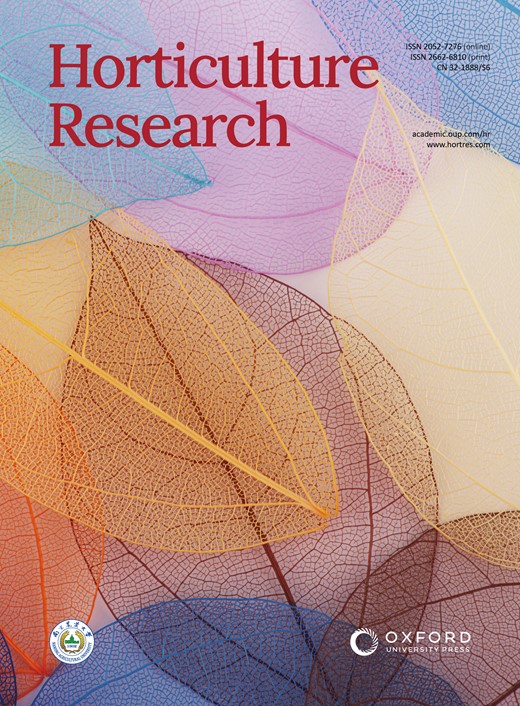Decoding Steroid-Derived Metabolite Engineering in Solanum
IF 8.5
1区 农林科学
Q1 Agricultural and Biological Sciences
引用次数: 0
Abstract
Steroidal glycoalkaloids (SGAs) and steroidal saponins (STSs) play significant role in the plant defense against pests and offer various pharmaceuticals applications. SGAs and STSs generally share common biosynthetic pathways in Solanum, originating from a furostanol scaffold. Despite the discovery of multiple GLYCOALKALOID METABOLISM (GAME) genes involved in the biosynthesis of these compounds, previous attempts for the metabolic engineering of these pathways have remained unsuccessful. The GAME15 protein, with its dual enzymatic roles, has unlocked a mystery surrounding the intricate process of metabolizing cholesterol. This protein not only acts as a glucuronosyltransferase but also serves as a metabolic scaffold, organizing several proteins for the proper functioning. This mini review briefly describes the molecular mechanisms and functional dynamics of GAME genes, particularly focusing on GAME15 as a key game changer gene and its role in metabolite channeling, regulation of pathway, and ecological importance. We highlighted the potential of this discovery for advancing metabolic engineering in crop improvement and the pharmaceutical industry. This finding opens doors for designing crops that are resistant to pests. Additionally, we identify important future research directions, including the regulatory mechanisms of these pathways and uncovering structural aspects of pivotal enzymes.解读茄属植物类固醇衍生代谢物工程
甾体糖生物碱(SGAs)和甾体皂苷(STSs)在植物抗病虫害中发挥着重要作用,具有广泛的药用价值。在茄属植物中,SGAs和STSs通常具有共同的生物合成途径,起源于糠甾醇支架。尽管发现了多个糖生物碱代谢(GAME)基因参与这些化合物的生物合成,但之前对这些途径的代谢工程尝试仍然不成功。GAME15蛋白具有双重酶促作用,揭开了胆固醇代谢复杂过程的神秘面纱。该蛋白不仅作为葡萄糖醛基转移酶,而且作为代谢支架,组织多种蛋白质正常运作。本文简要介绍了GAME基因的分子机制和功能动力学,重点介绍了GAME15作为一个关键的游戏规则改变基因及其在代谢物通道、通路调控和生态重要性中的作用。我们强调了这一发现在作物改良和制药工业中推进代谢工程的潜力。这一发现为设计抗虫害作物打开了大门。此外,我们确定了重要的未来研究方向,包括这些途径的调控机制和揭示关键酶的结构方面。
本文章由计算机程序翻译,如有差异,请以英文原文为准。
求助全文
约1分钟内获得全文
求助全文
来源期刊

Horticulture Research
Biochemistry, Genetics and Molecular Biology-Biochemistry
CiteScore
11.20
自引率
6.90%
发文量
367
审稿时长
20 weeks
期刊介绍:
Horticulture Research, an open access journal affiliated with Nanjing Agricultural University, has achieved the prestigious ranking of number one in the Horticulture category of the Journal Citation Reports ™ from Clarivate, 2022. As a leading publication in the field, the journal is dedicated to disseminating original research articles, comprehensive reviews, insightful perspectives, thought-provoking comments, and valuable correspondence articles and letters to the editor. Its scope encompasses all vital aspects of horticultural plants and disciplines, such as biotechnology, breeding, cellular and molecular biology, evolution, genetics, inter-species interactions, physiology, and the origination and domestication of crops.
 求助内容:
求助内容: 应助结果提醒方式:
应助结果提醒方式:


